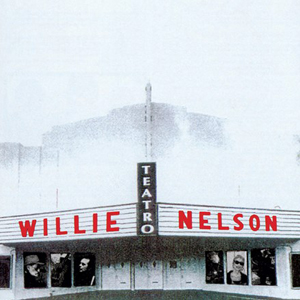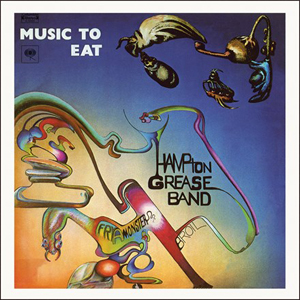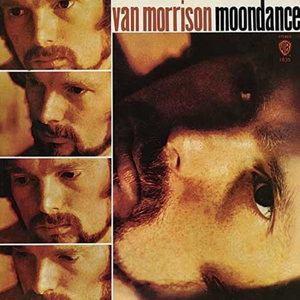
We checked out Willie Nelson’s initial vinyl issue of Teatro for our Record Store Day coverage way back in May 2015. In the review, I acknowledged some issues with the pressings that compromised the listening experience. At the time, I was so excited to finally have an analog copy of the first rate recording that I gave the record four out of five stars for sound quality. But I also reached out to the label on May 7, 2015, to see about getting my copy replaced. They said this: “This was a manufacturing issue, and we had to spend time discussing the problem and finding a solution with our manufacturer for this release, and considering it was Record Store Day, it took longer than anticipated to communicate with them at their busiest time of year.” So, they acknowledged that there was a problem, and they fixed it. I got an email from the folks at Light In the Attic (the same outfit responsible for the Modern Classic Recordings imprint) on August 21, 2015, saying that my replacement copy was en route. But my replacement copy was not a whole lot better than the first.
In our initial review, I hoped that the title would be reissued for at least a second time on vinyl with a better pressing, perhaps on standard black vinyl. That crazy dream came true late last year. And the record was purportedly pressed at RTI, no less. My ship has come in.
Or has it? While the pressings aren’t as flawless as the ones RTI does for Music Matters Jazz or MoFi, they’re pretty great. Way better than the copies pressed on gold colored vinyl that I got in 2015 from the folks at Rainbo Records. But here’s the thing: I don’t know that the new set was actually pressed at RTI. The label’s website said that it was, but Discogs says that both runs were pressed at Rainbo. The info in the dead wax is the same as on my 2015 set, which would seem to suggest that both sets were pressed at the same spot. I don’t necessarily care enough to drill down to the bottom of this well. The newest version of Teatro is outstanding. The wait is over. But the whole experience got me to thinking about pressing quality even more than I usually do. To me, the lack of transparency around which plants and sources were used for current releases is the biggest fallacy in the Vinyl World. So, I thought it might be a good time to list some of the plants along with some info about their respective reputations and open the whole thing up for discussion.
Secrets Sponsor
Feel free to comment, if you have pertinent information and experiences. Or if you don’t.
Some of the more popular plants are:
RTI (USA): my personal favorite. Their work for Music Matters and MoFi are without equal, as best I can tell. People have been complaining about their recent releases outside of those two labels, which begs the question: can a label pay more to have a higher quality record pressed? Are there tiered options for quality based on price?
Pallas (Germany): my former personal favorite. I started noticing issues with quality control a few years ago, and things never got better. Anyone else have a similar experience, or did I just have a run of bad luck?
Quality Record Pressing (USA): this is the pressing division of Analogue Productions. People sing their praises, but I’ve gotten the inconsistent product. Things seem to be on the upswing, but there are lots of complaints out there about records pressed off-center. Has anybody seen this?
MPO (France): I’ve had good luck across the board, but with a small sample size. Thoughts?
Third Man Pressing (USA): Jack White’s new thing. I have a couple of their records, and the pressings are near flawless. Very small sample size, but a huge improvement from when Third Man Records was using United Record Pressing in Nashville.
United Record Pressing (USA): the bottom of the barrel, in my opinion. Some of the noisiest pressings I own. I wonder if they stopped stamping their encircled “U” in the dead wax to throw the scent of the dogs. People were complaining about the URP quality so loudly and for so long that they might have disguised themselves by now. I haven’t seen their branding in over a year, but I can’t imagine they’ve stopped making records. I have a four-disc box set by them from early 2018 that is damn near perfect. Why would their quality fluctuate so wildly? Again, are there tiered options for quality? Why all the mystery?
That’s just a few. There are plenty of others like GZ (Czech), Rainbo (USA), Kindercore Vinyl (in Athens, GA), and on and on and on.
What are some of your faves, and which do you avoid?
Let’s try to get to the bottom of this once and for all, shall we?

Widespread Panic was hitting on all cylinders around the turn of the century, man. The shows were like fireworks: unpredictable, loud, and atypically beautiful. I’d long since stopped hoping for a studio recording that would accurately capture the experience. Like discharging a cannonball in a crystal showroom, it just seemed like too dangerous of an undertaking to pull off in tight confines. So, I wasn’t paying attention when they released ’Til the Medicine Takes. I was too busy looking for someone to cover my shift so I could make it to the next show. And wondering if the world’s computer systems would fail at midnight on New Year’s Eve. History has revealed the album to be the most representative of the Live Panic Experience, but it had never been released on vinyl until now. Things are looking up…
’Til the Medicine Takes probably contains Panic’s strongest collection of studio songs since their self-titled Capricorn Records debut in 1991. Spreadheads would debate that statement until the end of time, but I’ll stand by it. It’s got it all. The Gospel rave-up at the end of “All Time Low” will singe your eyebrows, and “You’ll Be Fine” is as pretty a thing as the band ever built. Producer John Keane added some nifty between song fillers that sort of serve as avatars for the band’s onstage song bridges, and a couple of the songs seem to fall together out of that noise, just like they did at Mud Island in Memphis that time a bird shit on my shoulder during “Pigeons.” Even a song like “Christmas Katie,” which would typically send me scurrying to the bathroom & the beer line, contains one of the band’s strongest studio jams. Easy.
I was blown away by the sonics on this release on first listen. Later, I attempted to listen more passively while doing chores around my apartment, but the record kept pulling me back into the living room. I’d wander like a zombie back to the sweet spot between my speakers, and realize an hour later that the dishes were still not washed & the carpet still needed vacuuming. Panic reissued a run of their first few studio albums a few years back, and the results were embarrassing. The United Record Pressing treatment rendered the albums unplayable. Panic righted the ship with subsequent releases, and this one might be the most compelling of them all. The two discs were pressed in the band’s hometown of Athens, George by Kindercore Vinyl, and they did a phenomenal job. The fullness and immediacy of the sound are instantly apparent with the vocals and percussion being especially alive. This is a limited edition of 3,000. Act fast.
I tried to listen to Medicine with the ears of a novice as opposed to the ears that I have. But they’ve lived through many years worth of live Panic episodes that have forever made objectivity a challenge. Some of my most memorable experiences and friendships were forged under the band’s sonic influence. If you were around for the band’s most heightened era, this record might be enough to take you back there. But if you’re looking for an introduction, I’d point you towards the Light Fuse Get Away live set. Still, Medicine is as close as the band has come to a true audiophile release. I can’t recommend it with enough vehemence.

Panic had already set their hook in my jaw when I caught a hot show in Columbia, South Carolina that really served to seal the deal. This would have been around 1991, and I would not be coming up for air soon. I’d be thrown into the boat, floundering around on the deck with the rest of my scaly friends for the foreseeable future. My vision was compromised that Carolina night, so I couldn’t read the entirety of what was printed on John Bell’s t-shirt. I could only make out the word “Aquarium” as he growled his way through two explosive sets. Soon, I’d learn of the band’s connection to the inimitable Col. Bruce Hampton (Ret.) and his misfit band of outcasts, the Aquarium Rescue Unit. I’d think back to that night and that shirt, and I’d soon have my own Col. Bruce stories to tell. About the time he guessed my birthday on the first try, for instance. Or the time he died onstage surrounded by friends during a tribute concert in honor of his 70th birthday while performing his favorite song, which was also the first song that he’d ever performed live. But that would come later…
Before Widespread Panic and the H.O.R.D.E. Tour and the birthday guessing game, Bruce was the vocalist in the Hampton Grease Band. This began in Atlanta around 1968. Their debut was a double album called Music To Eat in 1971. It is reputed to have been the second worst selling album in Columbia Records history. Or the second worst selling double album. Behind a yoga instructional record. Like many a Hampton myth and legend, the details are murky. I’ve heard tell of a neighbor who claimed that Hampton would only venture to the street in order to retrieve his mail while wearing a cow’s head. I’ve heard that he was a professional wrestling manager. He invented histories for his bandmates, and he played strange instruments with names like “chazoid.” He told me that he’d once seen a man evaporate into thin air. The Aquarium Rescue Unit’s live recording from the Georgia Theater is one of my all-time favorite albums, and it’s full of looney goodness, but I’d never explored Hampton’s earliest work until Real Gone Music reissued Music To Eat.
Which is not nearly as far out as I’d expected. I mean, it’s strange. Certainly. But it’s not unlistenable. It’s musical at times. Hampton could sing, it’s just tempting to lose sight of that when he’s singing about Little Debbies. Lowell George called Glenn Phillips “the most amazing guitarist I’ve ever seen,” but I don’t hear evidence of that on Music To Eat. I hear some good playing and some interesting techniques interspersed with a bunch of improvisational gibberish that managed to age better than one might have expected. Perhaps due to what we now have left for comparison. The Grease Band is most commonly linked to the Mothers of Invention and Captain Beefheart. I’ve never been able to get into either, but I recognize the genius in both. I find Music To Eat to be more accessible than most of what I’ve heard from either of those two bands and more engaging than almost any of the jam bands that Hampton influenced. If you like hearing grown men sing about snack cakes, I mean…

I remember listening to my old man’s copy of Moondance growing up. It was an original, or at least an early, pressing on the green Warner Brothers label. I was moved and confused in equal measure. At that age, I needed labels and categorization to facilitate the development of my own opinion, and both were in short supply. Did Moondance count as Rock music? Folk? Jazz, for crying out loud? The styles seemed as hard to pin down as Van Morrison himself. The cover’s pictures look like they are of two different men: Front Cover Van looks like he might have clawed his way to the surface from Middle Earth. Back Cover Van looks like he could have been Albert Finney’s stunt double in Tom Jones. And this was way before I knew of Morrison’s mercurial personality, and decades before I sat before Greil Marcus as he described his experiences writing his version of Morrison’s biography. Through all those eras, Moondance has occupied a unique place in my mind and the history of popular music.
Secrets Sponsor
I’m not sure why I waited so long to grab a copy of Rhino’s reissue. I knew it would be great.
Kevin Gray and Steve Hoffman were in charge, and it was pressed at RTI. That should have been enough to send me scurrying to one of a few retailers, especially since I already own a copy of Astral Weeks that was produced by the same team. It’s hard to imagine any available copies or pressings sounding better than what these folks concocted. These are reference quality works. The bowed stringed instruments vibrate with so much realism that it makes your teeth itch. Sounds float across and in and out of the program like ballerinas hovering above the stage, bathed in soft light before receding into the wings only to be upstaged by the principal dancer, Morrison’s voice, who comes twirling and twisting and grinding and flying to centerstage with unheard of grace and equal strength. Morrison’s vocal attack changes more frequently than his appearance, from a whisper to a growl, crooning and grunting his way to artistic nirvana. His harmonies at the end of “Caravan” meld with the horn arrangement to create a sonic kaleidoscope you can get lost in. The life in Morrison’s voice is rivaled only by the acoustic guitar, which serves alternately as a percussive timepiece and a sonorous seduction. It’s “in the room.” The piano is like a soft rain that cleanses the air to make room for the other instruments. And none of that even accounts for or has much to do with the songwriting. I mean, side one is a cavalcade of greatness. I don’t know how much better it can get, but side two is no less stellar despite being somewhat less renowned. “Come Running” would see to that on its own.
These reissues have been available for almost a decade now. They’re still being pressed at RTI from the Gray/Hoffman 2008 remasters. I have a copy of Astral Weeks Live at the Hollywood Bowl that I might purge simply because it doesn’t stand up to the quality of the Moondance/Astral Weeks releases from Rhino. They are two of the most under-the-radar audiophile titles in my collection. Don’t let them dance away before you get yours.

I thought I was going to lose my mind trying to grind my way through grad school. The commute was horrendous; the hours were long, the work was never-ending. That’s as it should be, I suppose, but I needed something to get me through. A new drug. One that wouldn’t hurt my head, or make my mouth too dry, or make my eyes too red. I needed some Classical music in my collection. I thought I’d get my ears on some audiophile reissues, and let the healing seep in. But there was yet more work to be done. I realized straightaway that not just any Classical music would do. I kept getting whisked away on swells of sonic emotion that often took me in the opposite direction of the way I wanted to go. Like Homer Simpson getting swept out to sea in that episode where he’s trying to impress Maggie. “This riptide is certainly nothing that daddy can’t struggle against.” Then, “Maggie! Call Aquaman!!!” It turns out; I needed some Baroque action. Bach’s work, in particular, turned out to be my Aquaman.
I found a Bach Trios record by Chris Thile, Edgar Meyer, and Yo-Yo Ma that did the trick. I play it often when my thoughts are in danger of sweeping me out to sea. More recently, I discovered the work that we are (ostensibly) here to explore. Hear about exploring, if you prefer. It involves the hands of just one player, but those hands are amongst the most accomplished in the history of piano playing. At least that’s what the internet tells me. Those hands belong to Martha Argerich, and she plays with more emotion, finesse, technique, heart, and skill than anyone else I’ve found so far.
I thought I’d learn how to write about Classical music with a little more grace and wisdom by reading the liner notes on the back cover of her latest release on Deutsche Grammophon. But I did not.
Speaking authoritatively about Classical music involves the learning of an entirely new language, and the ability to hear with ears that I don’t possess. Perhaps, due to the decreased attention spans so commonly associated with our current era, I simply can’t attend to the work with enough focus and intensity to tease out the various themes and motifs that I assume are there. Perhaps I haven’t developed my ear to a fine enough point to seize upon the nuances and details that make the work so compelling. But I know how I feel when I hear Argerich play Bach. I feel like this: inspired and awed; energized but with a calm center; content and alert. And happy. Happy to have found Argerich, and happy to know that there are other works out there to explore that might affect me in similar ways.
Deutsche Grammophon has a reputation for high quality. A couple of their titles that I own involve ticks and pops in the pressings, although this one does not. I can’t find any info on the sources DG uses, but my ears tell me that some of the life has been bled out of these performances, most probably at the hands of some digital imposition along the mastering chain. There’s just a slight lack of immediacy and presence that prevents the sound from hitting me squarely in the chest. Still, Argerich’s playing is unimpeachable, and these records are knocking on the door of greatness. Hopefully, a reputable reissue company lets them in soon.


